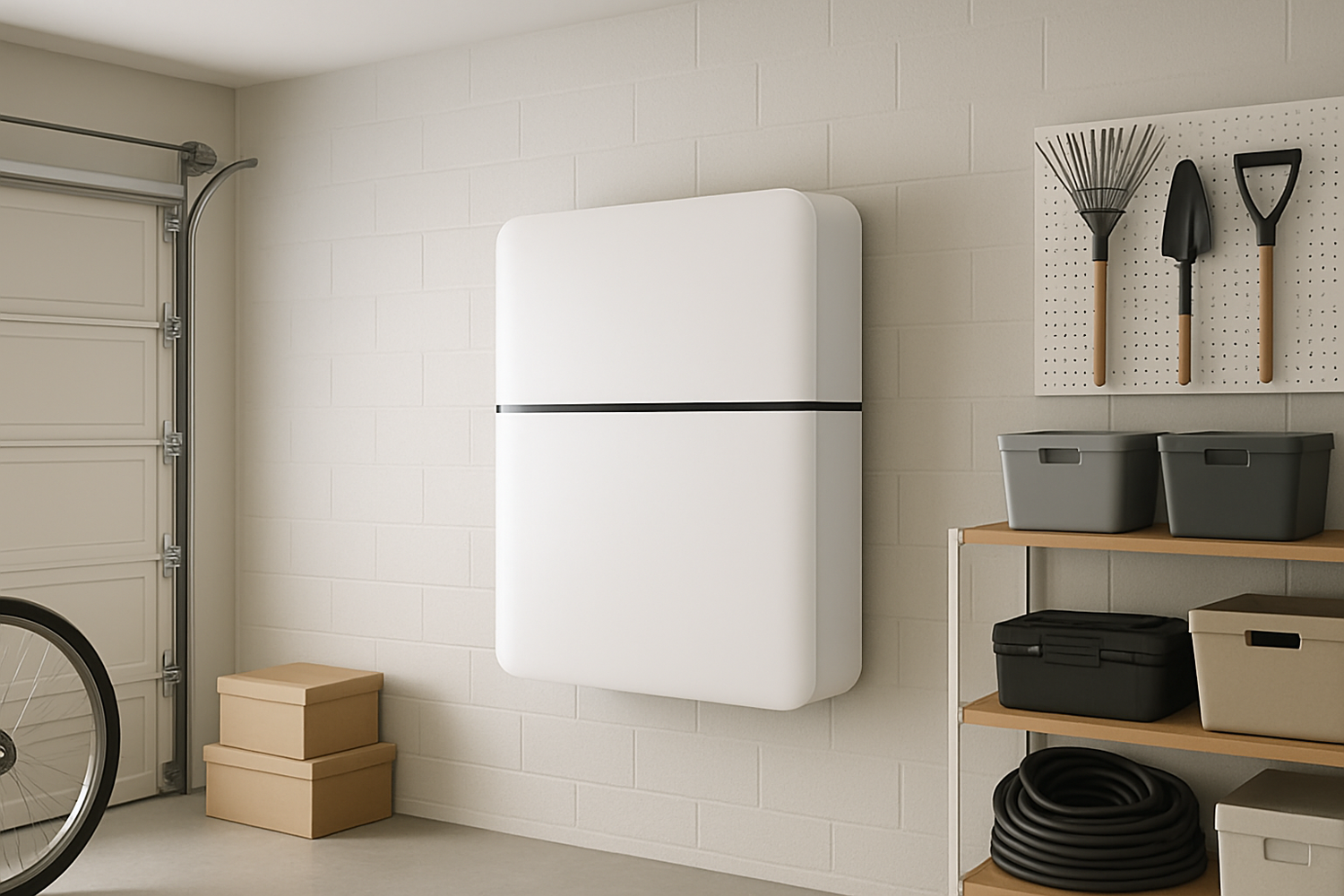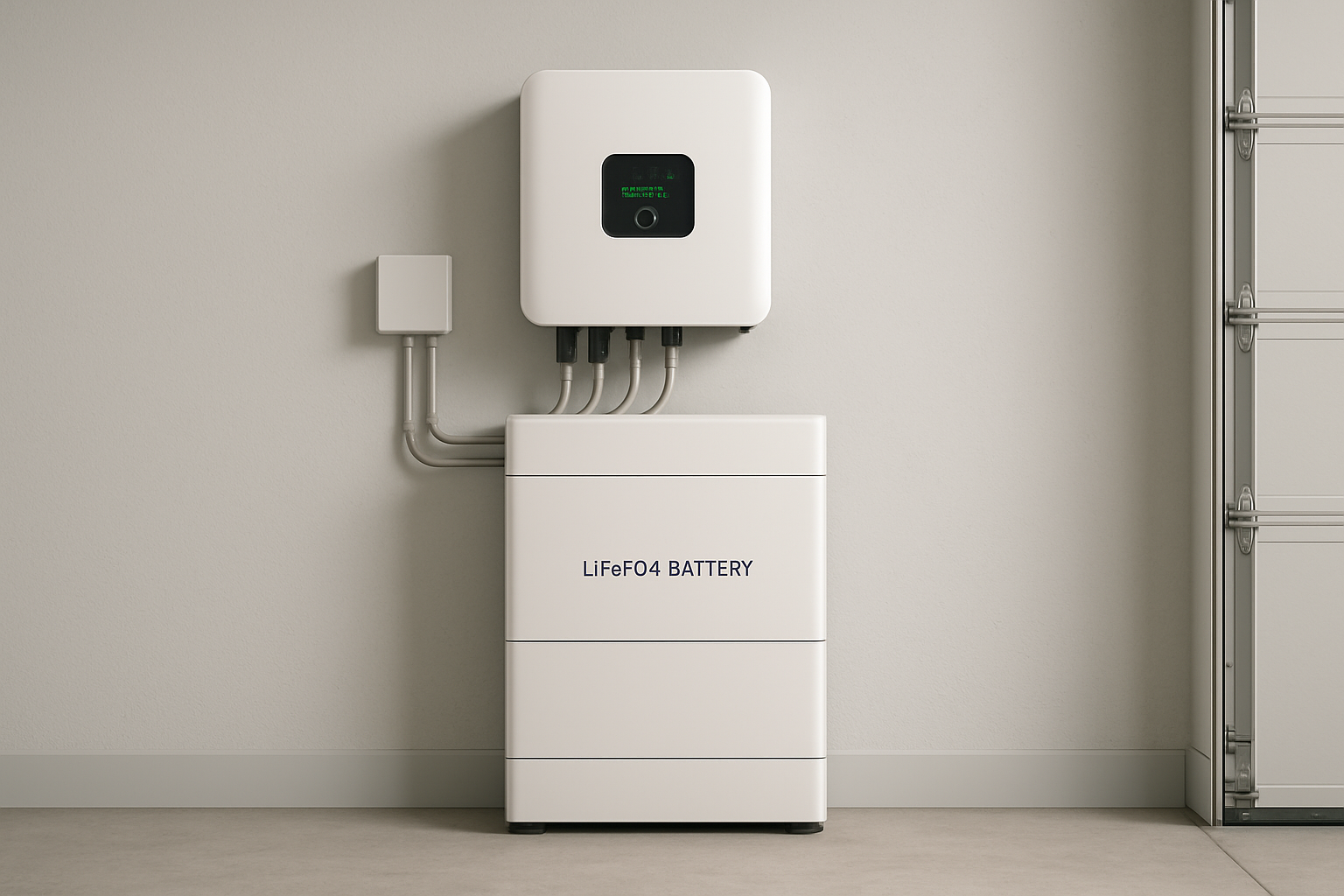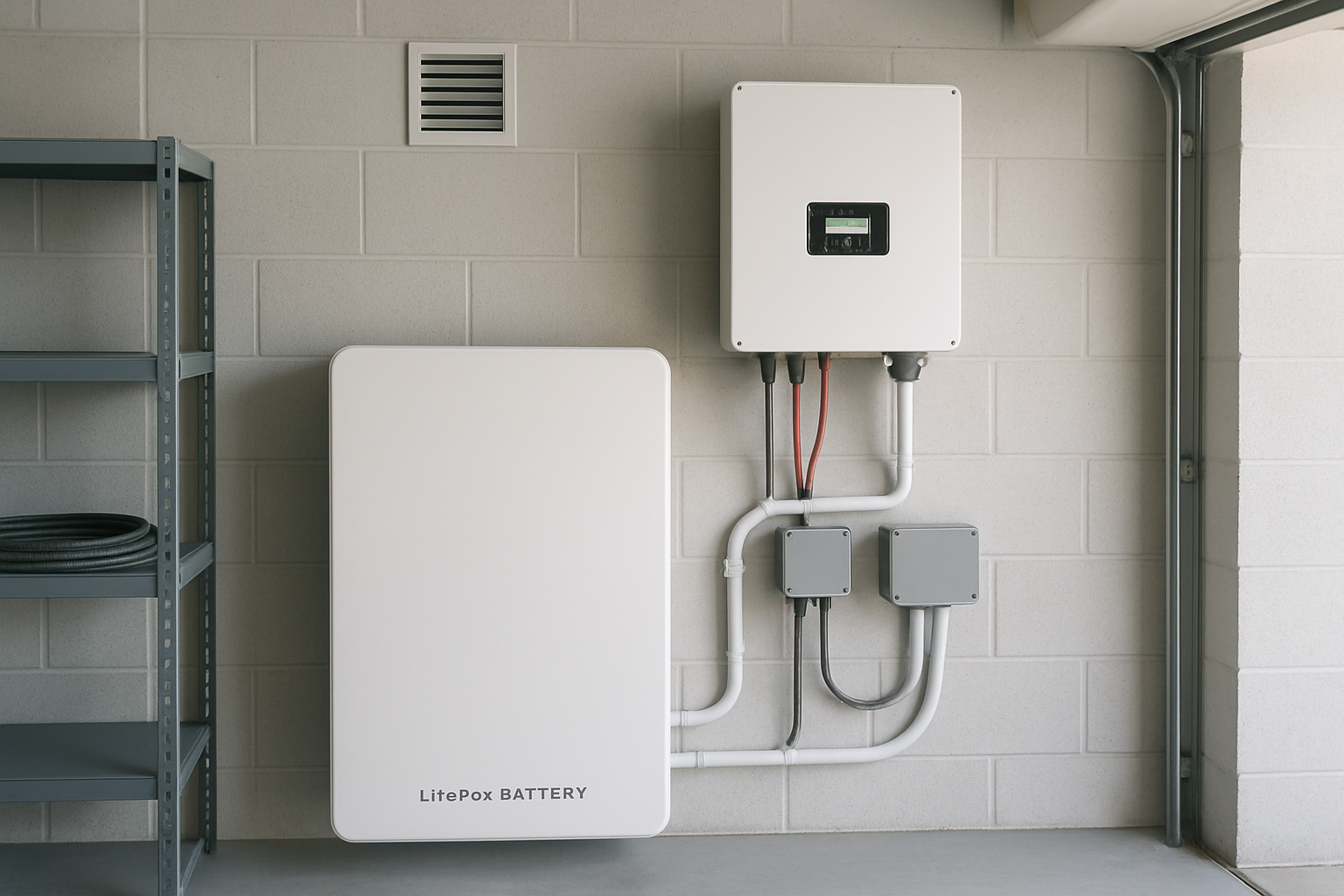As more homeowners embrace energy independence, residential energy storage systems are becoming a common feature in households. This shift is driven by a desire for reliable backup power and a way to maximize the benefits of solar energy. According to the International Energy Agency, battery storage was the fastest-growing energy technology in 2023, with deployment more than doubling from the previous year. With any advancing technology, questions about safety are natural. It’s time to separate the myths from the reality of home battery storage safety.
Understanding the Core Technology: Why Safety is Built-In
Modern home energy storage systems are complex devices with multiple layers of safety engineered directly into their design. From the fundamental chemistry of the battery cells to the sophisticated electronics that manage them, every component is designed for stable, long-term operation.
The LiFePO4 Advantage
At the heart of many advanced home batteries is Lithium Iron Phosphate (LiFePO4) chemistry. Unlike other lithium-ion variants, LiFePO4 is known for its exceptional thermal and chemical stability. The strong bonds within its molecular structure make it far less prone to overheating or thermal runaway, a condition where a battery enters an uncontrollable self-heating state. LiFePO4 batteries have a significantly higher thermal runaway trigger temperature—sometimes over 500°C—compared to the 180-250°C for Nickel Manganese Cobalt (NMC) batteries often used in other applications. This provides a much wider safety margin for residential use.
The Role of the Battery Management System (BMS)
If the battery chemistry is the foundation of safety, the Battery Management System (BMS) is the intelligent guardian. This onboard computer continuously monitors the health and status of every cell in the battery pack. Its primary functions include:
- Overcharge and Over-discharge Protection: Prevents the battery from being charged or drained beyond its safe limits.
- Thermal Monitoring: Tracks cell temperatures and can reduce power or shut the system down if it detects excessive heat.
- Cell Balancing: Ensures all cells maintain an equal state of charge, which improves performance and longevity.
- Fault Detection: Identifies potential issues like short circuits and can instantly disconnect the battery to prevent damage.
Myth 1: Home Batteries Are a Major Fire Hazard
The Reality: Statistically Low Risk with Modern Systems
While headlines sometimes focus on lithium-ion battery fires, these incidents are overwhelmingly linked to small consumer electronics or micromobility devices, not professionally installed home energy storage systems. Research from Germany calculated the probability of a home storage system fire at just 0.005% per year, a risk level comparable to that of a tumble dryer. According to a recent EPA fact sheet, improvements in battery design have led to a decrease in failure incidents per gigawatt-hour deployed.
Prevention is Key: Professional Installation and Certification
The most critical factor in ensuring safety is proper installation by certified professionals. Reputable systems are tested and certified to rigorous safety standards, such as UL 9540. This standard evaluates the entire energy storage system—including the battery (UL 1973), inverter (UL 1741), and control systems—to ensure all parts work together safely. Additionally, the UL 9540A test method is used to assess a system's resistance to thermal runaway, providing crucial data for safe installation.
Myth 2: Batteries Require Constant and Complicated Maintenance
The Reality: 'Set It and Forget It' Technology
Modern residential energy storage systems are designed for minimal homeowner interaction. The sophisticated BMS automates all critical maintenance tasks, such as cell balancing and health monitoring. Unlike older battery technologies that required regular fluid checks and manual adjustments, today's systems are largely self-sufficient. They operate quietly in the background, providing power when you need it without demanding constant attention.
Simple Steps for Optimal Performance
While these systems are low-maintenance, a few simple checks can ensure they operate at their best. This includes visually inspecting the unit to ensure vents are clear of obstructions and occasionally checking the system's mobile app for any notifications or alerts. For a deeper look into maintaining peak performance, understanding key metrics like Depth of Discharge (DoD) and cycle life is crucial. You can find a comprehensive breakdown in our ultimate reference on solar storage performance.
Myth 3: Home Batteries Are Prone to Overheating
The Reality: Advanced Thermal Management
Concerns about overheating are valid for any electronic device, but home energy storage systems are specifically engineered to manage heat effectively. This starts with the inherently stable LiFePO4 chemistry. It's further enhanced by the BMS, which acts as a constant watchdog over the battery's temperature. Most systems also incorporate passive cooling designs, such as heat sinks, or active cooling with low-noise fans to dissipate heat during heavy use, ensuring the cells always operate within their optimal temperature range.
Placement and Environment Matter
Proper installation location is another key aspect of thermal safety. A qualified installer will place the unit in a suitable location, typically a garage or utility space, away from direct sunlight and flammable materials. This ensures the system has adequate ventilation and is protected from extreme environmental conditions, further contributing to its safe and reliable operation.
Myth 4: All Lithium Batteries Are the Same
The Reality: A Spectrum of Chemistries
The term 'lithium-ion' describes a family of battery types, each with different characteristics. Lumping them all together is a common misconception. The chemistry used in a home storage system is fundamentally different from the one in your phone or an electric car, prioritized for safety and longevity over sheer power density.
Why LiFePO4 is the Choice for Residential Storage
The choice of LiFePO4 for home energy storage is deliberate. Its advantages in safety and lifespan make it the ideal chemistry for a device that will operate in your home for over a decade. The table below illustrates some key differences:
| Feature | Lithium Iron Phosphate (LiFePO4) | Nickel Manganese Cobalt (NMC) |
|---|---|---|
| Thermal Runaway Temperature | Very High ( >500°C) | Lower ( ~180-250°C) |
| Cycle Life | High (4,000-10,000+ cycles) | Moderate (1,000-4,000 cycles) |
| Safety Profile | Excellent, very stable | Good, requires more complex thermal management |
| Primary Application | Stationary Energy Storage, Industrial | Electric Vehicles, Consumer Electronics |
A Secure Path to Energy Independence
Home battery storage represents a significant step forward in personal energy management. The technology has matured rapidly, with safety at the forefront of design and engineering. By choosing systems with proven LiFePO4 chemistry, a sophisticated BMS, and verified safety certifications like UL 9540, homeowners can be confident in their investment. The greatest risks are not inherent to the technology itself, but rather from improper installation or the use of uncertified components. With a professionally installed, high-quality system, you can securely and reliably power your home and achieve greater energy independence.
Frequently Asked Questions about Home Battery Safety
What happens to a home battery in a power outage?
During a power outage, a home battery system will automatically and almost instantly disconnect from the grid. This safety feature, known as anti-islanding, protects utility workers from being exposed to live wires they assume are de-energized. The system then begins supplying backup power to your home's essential circuits.
Can a home battery be installed outside?
Whether a battery can be installed outdoors depends on its Ingress Protection (IP) rating, which measures its resistance to dust and water. While some units are rated for outdoor installation, most perform best when installed in a protected, temperature-controlled environment like a garage to shield them from extreme weather and prolong their lifespan.
What safety certifications should I look for?
The most important certification for a complete system is UL 9540. This confirms the entire package—battery, inverter, and software—has passed rigorous safety testing. You should also look for UL 1973 certification for the battery modules themselves and UL 1741 for the inverter.
How long does a home battery last?
LiFePO4 batteries are known for their exceptional longevity. A high-quality home battery system is typically designed to last for 10 to 15 years or more. Warranties usually guarantee the battery will retain a certain percentage of its original capacity after a specific number of cycles or years of service.
Disclaimer: The information provided is for educational purposes only and does not constitute professional installation, financial, or legal advice. Always consult with a qualified professional for your specific needs.





Leave a comment
All comments are moderated before being published.
This site is protected by hCaptcha and the hCaptcha Privacy Policy and Terms of Service apply.